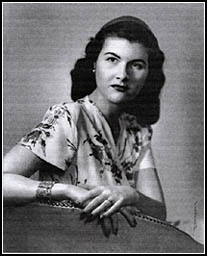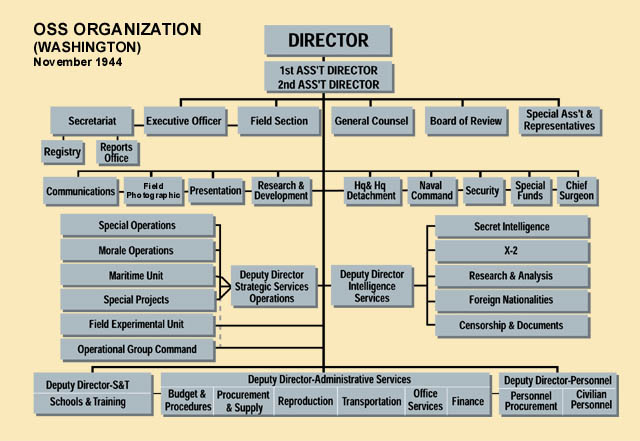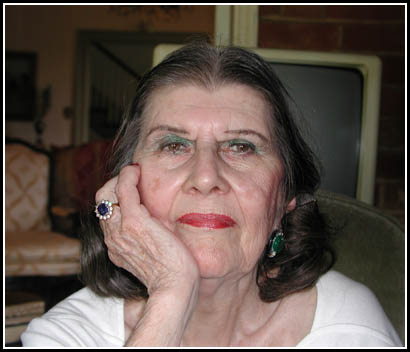 Oral
Historian: Margaret A. Sells Oral
Historian: Margaret A. Sells
Interview Date: 20 August 2008
Interviewer: John McQuarrie
Dr. Margaret Sells Emanuelson
was born Margaret A. Sells on February 1st, 1924. She grew up in Atlanta,
Georgia. The daughter of an Army Major, who was a veteran of WWI, she
recalled a story of a time in her early childhood when she and her father
stood on a parade ground and watched the American flag being lowered to the
playing of taps. He explained to her that the men doing this were extremely
careful never to let the American flag touch the ground. Even at her young
age, she understood the importance of that concept. The surge of pride and
patriotism, she said, was something that never left her.
After completing high
school, Ms. Sells enrolled in Shorter College-then a women's college. After
two years, she transferred to the University of North Carolina, at Chapel
Hill. There, she met Bill Emanuelson, her future husband. In 1944, she
graduated at age 20-a remarkable feat, considering that so few women attended
college, at the time, let alone finished at an age two years younger than
their peers.
During Ms. Sells' time in
school, America was hard at work to win the war, but that work was well
underway even before the United States entered the war. Americans, Dr. Emanuelson
explained, were largely interested in avoiding another global conflict,
having just gotten out of one twenty years before. Conscription, which began
in 1940, coupled with a huge boom in industrialization, was America's way of
posturing ourselves to simultaneously avoid war and send aid to our allies.
The unanticipated consequence of this was that the window of opportunity for
women to participate was thrown open like never before. Ms. Sells was not the
only woman she knew who was anxious to participate. Her mother was working in
Washington, D.C., for GT, and her future mother-in-law got someone to swear
that she was two years younger than she was so that she would be eligible to
serve in the Women's Army Corps (WAC).
After leaving school, Ms.
Sells went to work in Washington, D.C., for the Bureau of Ships. Created just
before WWII, the Bureau of Ships was charged with coordinating the massive
naval fleet that ferried troops and supplies all over the world to supply our
allies and sustain the United States' foreign campaigns. Ms. Sells was hired
by the Bureau under the classification CAF, or
Clerical-Administrative-Finance. Her assignment was Code 203, which meant that
she was working in the personnel department. The Bureau of Ships worked to
coordinate the thousands of officer, enlisted, and civilian personnel that
were affiliated with the Navy and its installations. Her position allowed her
access to some information that was of particular interest to her. She had a
boyfriend on the cruiser, USS Santa Fe, and she wanted to see the plans of
the ship, which her commander allowed her to do.
In June 1944, shortly after
arriving at the Bureau, Ms. Sells requested a weekend leave to go to Virginia
Beach, VA. The Bureau's employees worked six days per week, and Ms. Sells had
not worked there long enough to accumulate time off, so she was given
permission to take a weekend trip with the caveat that she work seven days
the following week. When she returned to work, she found that both the
Secretary of the Navy and her commander, who worked for the SECNAV, were very
unhappy. Apparently, the filing system for organizing the various positions
and vacancies for the officer, enlisted, and civilian personnel had been
badly disorganized. The Bureau was struggling to get their affairs in order.
On the Sunday when Ms. Sells arrived to put in her extra time, she was given
the task of sorting out the mess. Her solution was to get a large sheet of
paper and a ruler and make a huge chart that outlined all of the various
positions and who filled them, and identified any vacancies. On Monday, she
presented her work to her commander, who subsequently took it to the SECNAV.
For her work, she was awarded a commendation and a promotion-ahead of
nineteen employees more senior than she.
Dr. Emanuelson described
working life with the Bureau of Ships. Security and secrecy were at a
premium. At the entrance to the main office on Constitution Avenue, there were
armed guards and people, who checked every bag and package that entered the
building. All over the walls there were posters with clever slogans like,
"Loose lips sink ships," and "Shhh." In a time when men
all over the country were being drafted into service, there were a great many
female officers who stepped up to work at the Bureau of Ships; the commander
for whom Ms. Sells worked was a woman.
Dr. Emanuelson paints a
very vivid picture of the patriotism that infected American youth during
WWII. It is easy to see why she was so gung-ho to work in a combat support
role during the war. She explained that for every GI on the battlefield, it
took about twenty other people working in support roles to make sure they
were equipped to carry out their mission. Absolutely everything was rationed.
Cigarettes were nearly impossible to get as they were all being sent to the
GIs, and when Ms. Sells got them, it was usually from her friends fighting
overseas. The mood was tense, but when the troops would come home on leave,
it was a huge party. "Eat, drink, and be merry for tomorrow you might
die," she said, "and sometimes you did."
In September or October
1944, the Office of Strategic Services (OSS) approached Ms. Sells to work for
them. Created in 1942 as a response to the United States' desperate need for
a formal intelligence service, the OSS recruited personnel from all walks of
life. A friend of Dr. Emanuelson's, Betty McIntosh (then, Elizabeth Teet),
was recruited by the OSS after the bombing of Pearl Harbor. At the time, she
was working there as a journalist for a newspaper owned by Scripps Howard.
Singer Marlene Dietrich and the now-famous culinary genius, Julia Childs,
also worked for the OSS in the morale operations with Betty McIntosh. Ms.
Sells was never fully aware of how she was chosen for OSS, but her friends in
Atlanta later told here that FBI agents had been around asking questions
about what kind of person she was-obviously surveilling her to see if she was
a suitable candidate for the OSS.
When Ms. Sells was brought
to work for the OSS, she was subjected to extensive psychological and
situational testing. At the time, she explained, psychological testing was
beginning to emerge as a metric for a variety of things. GIs were given
pencil and paper tests to determine their suitability for combat, and
alarmingly, Dr. Emanuelson explained, nearly 60-70% of those tested were
found to be unfit for duty. Ms. Sells testing was quite different. Aside from
the exhaustive individual psychological examinations, she was also given a
battery of situational examinations. She recalled an incident where she and a
group of men were placed in a room with some chairs and boards, and they were
instructed to build a bridge over a thirty-foot expanse of water. The materials
were clearly insufficient to accomplish the task, but the point of the test
was to observe leadership skills and how the recruit interacted with others.
As a woman, Ms. Sells had trouble getting any of the men to listen to her,
but in spite of it, she was brought on board by the OSS.
Information was a carefully
guarded commodity with the OSS. Dr. Emanuelson explained how information
related to any work that went on was strictly need-to-know. People simply did
not discuss OSS-related matters with anyone to whom it did not relate, and
with very good reason. America's best and brightest were the ones selected
for OSS work, and of those, only the most fit were sent overseas. For her own
part, Ms. Sells worked in a converted warehouse somewhere in Washington, D.C.,
as she was too young for overseas service. She had a colleague in the office,
Millie, who she suspected of being there to keep an eye on her while her
application and full acceptance into the OSS was being approved.
The OSS was a very broad
umbrella for a myriad of wartime activities. Within OSS, there were several
branches: secret intelligence, research and analysis (which Dr. Emanuelson
said was where agents were sent if there was no other place for them),
special operations, X-2 (which had veto power over everyone else, as they
were the big-picture people), research and development, morale operations,
maritime units, operational groups, communications, and medical services.
Because the nature of the work was so intertwined and secretive, Dr. Emanuelson
suggested that it was really very difficult to pinpoint exactly to what end
your efforts were working.

OSS Organization Chart, November 1944
The OSS and their British
counterpart, MI-6, worked very closely throughout the war, and American
agents were often sent to collaborate with the British. The British had
different operational methods that were, by comparison to the American tactic
of rigid measurement, very subjective. In more than one instance, American
operatives, who had been cleared for duty, went overseas and were rejected by
the British. In those cases, American psychologists like Dr. Emanuelson's
friend, Dr. William Morgan, had to go and calm the waters to get the
Americans into action. Later in the war, Dr. Morgan would work to coordinate
resistance groups in places like France with the OSS and
MI-6.
Dr. Emanuelson was quick to
explain that one needed not travel overseas to work as a spy. There was a
fair amount of espionage happening in Washington, D.C. In France during WWII,
the provisional Vichy government was in place. They were cooperating with the
German government, so that made them something of a threat to the United
States. A woman named Cynthia, the daughter of a prominent physician and
general, was working for the OSS at the time. She and her male partner were
assigned to break into the French embassy and photograph documents that were
kept in a safe. Cynthia seduced a young French diplomat to lure him out of
the office so her partner could retrieve the information that they were
seeking. She succeeded, and later fell in love with and married the diplomat.
Dr. Emanuelson did not know Cynthia personally, and pointed out that her
tactics, though effective in that situation, were not proscribed practice for
women in the OSS.
Dr. Emanuelson described
her time in OSS as a lot of hurrying to get someplace, and then waiting for
more to do. The State Department required that any agent who worked overseas
be at least twenty-one years old. When she went to OSS, she was twenty, and
had to wait for her birthday to be eligible for overseas travel. After her
birthday, however, she was put "on alert." To be on alert meant to
be ready to leave the country at a moment's notice. The alert period
typically lasted four weeks. As the clock ticked down, the agent could be
more and more sure that their departure was imminent. During the last week of
Ms. Sells' alert period, two or three days before her last day of alert, the
war in Europe ended.
Shortly after VE-Day, Ms.
Sells' then-boyfriend, Bill Emanuelson, was on leave from the Navy. He had been
flying overseas, and was home for ten weeks. The two decided to get married,
and Mr. and Mrs. Emanuelson both agreed that the war with Japan would soon be
over. It made little sense to take any unnecessary risks by traveling abroad,
and so Mrs. Emanuelson resigned from the OSS.
After WWII ended, Dr. Emanuelson
explained, President Truman was very concerned about the OSS in a post-war,
peacetime atmosphere. As he saw it, General Donovan, the general in charge of
the OSS, controlled a lot of information and personnel that could conceivably
operate unchecked, and present a challenge to the federal government's
authority. In October 1945, President Truman dissolved the OSS along with
other war agencies; OSS functions were transferred to the State and War Departments.
But the need for a postwar centralized intelligence system was soon
recognized in Washington, and two years later in September 1947 the Central
Intelligence Agency (CIA) was created.
Mr. and Mrs. Emanuelson
moved to Virginia Beach, VA. They purchased a home in Linkhorn Park and lived
there for several years. After one particularly devastating hurricane that
hit the area, the Emanuelsons found a large home called Greystone on nearby
Crystal Lake that had been badly damaged and vandalized after the storm. They
purchased the home, restored it, and lived there with their five children
until they moved back west, and eventually settled in Scottsville, VA.
At about the time that the Emanuelsons
moved into Greystone, Mrs. Emanuelson became Dr. Emanuelson after finishing
her doctoral work in clinical psychology at the University of Virginia. She
had previously received a Master's Degree from Virginia Commonwealth
University. Dr. Emanuelson was hired as the first Chief Psychologist for
Virginia Beach City Public Schools and virtually created the school
psychology program that exists there today. After leaving that position, she
became the Director of Psychological Services for a nearby psychiatric
hospital and started a school there for learning disabled and emotionally
disturbed children. Following that work, she spent the next thirty years in
private practice and was a very sought-after expert witness, examiner, and
consultant for numerous court cases.

Margaret Sells Emanuelson, August 2008
Today, Dr. Emanuelson is
still very involved in the in the OSS society. Her long-time friend, Betty McIntosh,
publishes the quarterly OSS Bulletin, and there is still a very active and
connected network of OSS veterans. Dr. Emanuelson herself has published two
novels that chronicle the exploits of fictional characters living out the
activities that Dr. Emanuelson and her cohorts actually did. As Dr. Emanuelson
pointed out in her interviews, the fact that men were fighting overseas made
it possible for women to get involved with agencies like the OSS, and female
operatives feature prominently in her novels. In fact, nearly one fifth of
the 25,000 OSS agents operating in WWII were women.
Even today, though OSS
veterans are still in touch, their dedication to secrecy and intelligence
gathering for the Unites States is a hard habit to break. Years ago, Dr. Emanuelson
saw her friend and former OSS colleague, Dr. Morgan, at a conference of the
Virginia Psychological Association. He asked her what work she had done
during her time in the OSS. She replied, "Not much of anything." He
laughed, and agreed that probably the most appropriate answer.
|
In an
interesting comparison, and by way of closure, Dr. Emanuelson explained
that in many ways, her career as a forensic and clinical psychologist was a
great deal like being a spy. Treating a patient is only possible if you can
first ascertain the cause of the problem. In the same way, the flexibility,
investigative techniques, and problem solving skills used in psychology are
exactly what one needs to be a spy.
|
|
|
|
|
|


